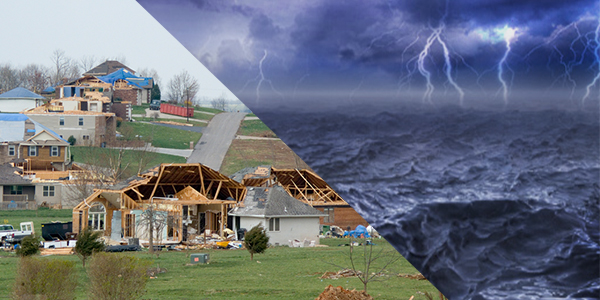Will More Private Insurers Step in as Flood Waters, Costs, and Premiums Rise?

|
|
The scenes in Texas are as shocking as they are heartbreaking. We’re seeing once again that flooding caused by storm surge and heavy rain can be much more devastating during hurricanes than the wind — similar to what happened back in 2005 when Hurricane Katrina struck New Orleans.
While well-built structures can withstand a lot of wind, water can get in through the tiniest cracks and crevices — destroying your home and belongings.
When it comes to insuring against those losses, though, there’s a problem. Your basic homeowner’s policy may reimburse you for losses incurred due to fire, theft, or wind damage, but it won’t give you a dime for flood damage. You’ll need separate flood insurance to cover any losses caused by rising water. Home buyers are generally required to get it when they purchase a home in a flood zone and the policies are usually priced at an affordable level.
But those affordable prices come at a cost: Most flood insurance policies today are sold through the federally backed National Flood Insurance Program (NFIP). If you have a flood insurance policy, there’s a private insurer that underwrites and services the policy — but it has no skin in the game. The private flood insurance market has been mostly nonexistent for over half a century.
Let’s jump back to the 1950s to explain why. This was when individual insurance companies began realizing that the premiums they needed to charge to stay profitable were way too high for average Americans. This eventually led to a lack of private insurers in the market … even as the need for flood insurance didn’t go away. So the federal government stepped in, creating the NFIP in 1968. It offered more affordable premiums, something the private insurance industry couldn’t do.
But after devastating storms like Katrina in 2005 and Sandy in 2012, the federal program began running out of cash and accumulating debt. The low premiums that the program was charging weren’t enough to cover losses in a disastrous situation.
Just look at the graph below and you can see how mismatched premiums and claims can get. The year 2005 stands out immediately thanks to Katrina. That year there were $1.8 billion in premiums earned and $15.3 billion in claims, a whopping $13.5 billion gap. We will almost certainly see something similar with Harvey as its flood toll will most likely be extremely high.

To battle these shortages during years of catastrophic claims, changes have been made to the government program – changes that are raising flood policy premiums. As a result, some private insurers are starting to see an opportunity to get back in the business on a profitable basis.
Currently, private policies make up a very small portion of the overall flood insurance market. The P&C statutory filings for 2016 show that the private market reported $239.5 million in direct premiums earned, with $91 million in claims. So, it appears that the overall performance by 46 insurance companies brought in $148.5 million in 2016.
In case you are wondering, here are the P&C insurers with the largest amounts of flood insurance business in 2016.
Top Private Flood Insurers in 2016 (by New Policies Written)

The bottom line is that the National Flood Insurance Program is having trouble coming up with money to cover its losses, given the low level of premiums. Premiums are adjusting higher in response, which could give more private insurers a chance to enter the market profitably. But this remains a very risky business as a disaster could strike at any given time, wiping out communities and insurance companies that protect them.
If you choose to consider a private flood insurance policy, make sure to check out Weiss’ P&C safety ratings first.
Think Safety,
Gavin Magor
Insurance Insights Edition, By Gavin Magor, Senior Financial Analyst Gavin has more than 30 years of international experience in credit-risk management, commercial lending and insurance, banking and stock analysis and holds an MBA. Gavin oversees the Weiss ratings process, developing the methodology for Weiss’ Sovereign Debt and Global Bank Ratings. Gavin has appeared on both radio and television, including ABC and NBC as an expert in insurance, bank and stock ratings and has been quoted by CNBC, The New York Times, Los Angeles Times, and Reuters as well as several regional newspapers and trade media. |



